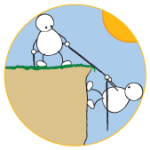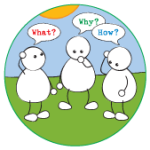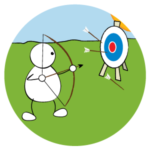Benefits of this blended learning programme for the school
Our core programmes are based on best practice thinking in professional development. This means we blend online information with learning teams. Our researched information comes to you online. You discuss and explore it in learning teams across the school. Teachers then plan, use and share the changes they want to make in their classrooms. This way of learning together organises a consistent school-wide approach to developing pupils’ learning behaviours and:
- Shifts the culture of the school to becoming more learning friendly
- Focuses learning teams on a gradual change process
- Builds expertise right across the school
- Ensures the school STARTS and STAYS on a proven right track
- Ensures you build better learners RIGHT not LITE
- Organises professional development activities throughout a year
- Scaffolds in-house training, saving cover costs for external courses
- Has a far greater impact on classroom practice than traditional staff development activity.
The blended programme includes
 A day of face-to-face consultancy in the school
A day of face-to-face consultancy in the school
- A half-day consultancy with senior leaders assessing the schools current learning culture and estimating the journey ahead
- An induction session for staff who will be responsible for facilitating learning teams
- A twilight session for all staff introducing the basic elements of learning power and introducing them to the online course to come.
Online Programme – Stepping Stones Phase 1
The course covers four key Learning Habits:

Perseverance
Perseverance is key to the learning journey. It is vital that pupils are able to get to grips with the knotty emotions of learning, and can view and use them positively as aids to the journey, not as obstacles.
Collaboration
At its least sophisticated, collaboration is little more than being cooperative. At its most sophisticated and complex levels it goes beyond learning ‘in a team’ and becomes learning ‘as a team’. It is an invaluable life skill.
Questioning
The desire to ask questions to satisfy innate curiosity is alive and well in very young children, as any parent of a 3-year old will readily confirm! Explore how we can ensure that questioning remains alive and builds into a full blown inclination to explore and learn about the world.
Revising
Pupils need to learn how to deal with change, emotionally and practically. With an inflexible frame of mind they are unlikely to recognise the need to change their ideas or the way they do something. They also need to know what ‘good’ looks like; how to keep an eye on how things are going; and how to evaluate how things went against external standards.
How the online programme works
The Stepping Stones Phase 1 programme consists of nine full online units, each expected to take about a month to implement in classrooms, and one shorter introductory unit. Each full unit is divided into four sections:
Three individual teacher sections
Teachers work their way through the materials at a time and place to suit them. Each unit will usually take about 30–45 minutes to work through and think about. The materials introduce new thinking and practical ideas for staff to get their heads around prior to their team session.
A Professional Learning Team meeting section
This brings staff together as a learning team at monthly intervals (typically six to eight staff per team), convened and led by a learning champion from your school. Staff share and discuss how they have moved their practice to incorporate learning behaviours, consider new material introduced in the individual online learning sessions, and plan their learning enquiries to be implemented in the next month. Each team session is planned to last about an hour.
The online units are:
a) A Culture for building Powerful Learners
Best used first, this unit is designed to guide you through a process of understanding, assessing and improving your classroom learning culture: making it more learning-friendly in order to build your students’ learning power.
- Learning cultures. A big shift? Unpick the meaning of classroom cultures, what they might consist of and the big shifts that may be needed to develop better learning. Use the culture tool to estimate where your classroom culture is now.
- Learning friendly cultures; Lots of little shifts. Find out about the four big dimensions of culture and use the culture tool 2 to estimate the sorts of shifts your classroom culture would benefit from.
- Your classroom culture. Some ideas to get you started. Look for ideas to strengthen your learner/learning classroom culture.
- Team reflection and planning. Share the results of your culture analysis with colleagues. Make plans for what everyone needs to do and what you will each do individually.
b1) Progress in Perseverance
This mini-unit is an information unit; it does not suggest practical ideas for improvement. As such it should be coupled with one of the four perseverance units below.
Perseverance is key to the learning journey. It is vital that pupils are able to get to grips with the knotty emotions of learning, and can view and use them positively as aids to the journey, not as obstacles.
The unit aims to help teachers to:
- explore the components of the big picture of perseverance, how it’s made up
- analyse where their students currently function in relation to progress in perseverance
- look briefly at their own practice in developing a perseverance-friendly culture
The next four units delve deeper into Perseverance, aiming at growing pupils’ positive attitudes to learning.
b2) Engage students in unsticking their learning
This unit aims to:
- help teachers to analyse how their students behave and feel about being stuck
- help teachers to look at their own classroom practice in developing a ‘stuck’-friendly culture
- suggest practical strategies to increase students’ skill and confidence in dealing with being stuck
- assist teachers in adapting their practice, using a learning enquiry method (team reflection and planning)
b3) Engage students in rising to Challenge
This unit aims to:
- help teachers to analyse how their students feel and behave when faced with challenge
- help teachers to look at their own classroom practice in developing a learning-challenge-friendly culture
- suggest practical strategies to increase students’ skill and confidence in dealing with challenge
- assist teachers in adapting their practice, using a learning enquiry method (team reflection and planning)
b4) Engage students in Managing Distractions
This unit aims to:
- help teachers to analyse their students’ awareness of being distracted and strategies for dealing with distraction
- help teachers to look at their own practice in developing a learning culture that helps students to maintain focus
- suggest practical strategies to increase students’ skill and confidence in dealing with internal and external distractions
- assist teachers in adapting their practice, using a learning enquiry method (team reflection and planning)
b5) Engage students in achieving Goals
This unit aims to:

- help teachers to analyse how their students think and feel about pursuing goals
- help teachers to look at their own classroom practice in developing a goal-friendly culture
- suggest practical strategies to increase students’ skill and confidence in pursuing goals
- assist teachers in adapting their practice, using a learning enquiry method (team reflection and planning)
The next three units explore how to build on and grow the key learning behaviours.
c) Putting Collaboration into Learning

At its least sophisticated, collaboration is little more than being cooperative. At its most sophisticated and complex level it goes beyond learning ‘in a team’ and becomes learning ‘as a team’. It is an invaluable life skill.
This unit is designed to guide you through a process of building the habit of Collaboration in your pupils. Sections 1–4 consider:
- Collaboration and how it develops. Unpick the meaning of Collaboration, how it develops over time, and use the Collaboration chart to plot where your pupils are now.
- Taking Collaboration into classroom culture. This section offers numerous suggestions for developing a Collaboration-friendly culture and building pupils’ Collaboration skills. Here you will find ideas for lesson starters / quick wins; classroom activities; learning reflection tools; ideas for appropriate learning language for each stage of progression in Collaboration. You are likely to browse in this section for up to 30 minutes in preparation for the team meeting.
- Blending learning habits with content. Example dual-focused lesson. This section suggests a series of questions and steps you might use to incorporate the development of learning habits into the design of lessons and activities. Here we look closely at how to blend improving pupils’ learning habits with the content you have to teach. The section covers: The six principles behind any learning powered session; Big questions to ask about lesson design; Lesson planning in action; an exemplar Collaboration-focused task.
- Team reflection and planning. Share the impact of your experiments with colleagues and plan what you need to do next.
d) Putting Questioning into Learning
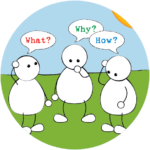
The desire to ask questions to satisfy innate curiosity is alive and well in very young children, as any parent of a 3-year old will readily confirm! Explore how we can ensure that questioning remains alive and builds into a full-blown inclination to explore and learn about the world.
This unit is designed to guide you through a process of building the habit of Questioning in your pupils. Sections 1–4 consider:
- Questioning and how it develops. Unpick the meaning of Questioning, how it develops over time, and use the Questioning chart to plot where your pupils are now.
- Taking Questioning into classroom culture. This section offers numerous suggestions for developing a Questioning-friendly culture and building pupils’ Questioning skills. Here you will find ideas for lesson starters / quick wins; classroom activities; learning reflection tools; ideas for appropriate learning language for each stage of progression in Questioning. You are likely to browse in this section for up to 30 minutes in preparation for the team meeting.
- Blending learning habits with content. Example dual-focused lesson. This section suggests a series of questions and steps you might use to incorporate the development of learning habits into the design of lessons and activities. Here we look closely at how to blend improving pupils’ learning habits with the content you have to teach. The section covers: The six principles behind any learning powered session; Big questions to ask about lesson design; Lesson planning in action; an exemplar Questioning-focused task.
- Team reflection and planning. Share the impact of your experiments with colleagues and plan what you need to do next.
e) Putting Revising into Learning
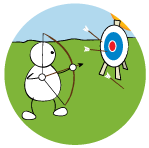
Pupils need to learn how to deal with change, emotionally and practically. With an inflexible frame of mind they are unlikely to recognise the need to change their ideas or the way they do something. They also need to know what ‘good’ looks like; how to keep an eye on how things are going; and how to evaluate how things went against external standards.
This unit is designed to guide you through a process of building the habit of Revising in your students. Sections 1–4 consider:
- Revising and how it develops. Unpick the Revising chart and plot where your pupils are now.
- Taking Revising into classroom culture. This section offers numerous suggestions for developing a Revising-friendly culture and building pupils’ Revising skills. Here you will find ideas for lesson starters / quick wins; classroom activities; learning reflection tools; ideas for appropriate learning language for each stage of progression in Revising. You are likely to browse in this section for up to 30 minutes in preparation for the team meeting.
- Blending learning habits with content. Example dual-focused lesson. This section suggests a series of questions and steps you might use to incorporate the development of learning habits into the design of lessons and activities. Here we look closely at how to blend improving pupils’ learning habits with the content you have to teach. The section covers: The six principles behind any learning powered session; Big questions to ask about lesson design; Lesson planning in action; an exemplar Revising-focused task.
- Team reflection and planning. Share the impact of your experiments with colleagues and plan what you need to do next.
The final unit in Phase 1 is designed to enable you to review your progress so far.
f) Reviewing our progress

A rich variety of tools help you review your progress in developing a learning culture in your classrooms. This review will provide you with relevant information on which to base your approach in the next phase of building pupils’ learning powers. Sections 1–4 consider:
- Reflecting on your changing practice. Looking at what you have done and how your classroom has changed. This section answers the question “How far have you come?”
- Giving pupils a voice. Finding out how your pupils have benefited. This section answers the question “How well have pupils taken to this way of learning?”
- Learning with and from colleagues. Learning from learning walks and observations. This section answers the question “What are the variations on the theme and what can I learn from these variations?”
- Team session: Learning together. Putting your heads together and thinking “what next?” This team session answers the questions “How are we doing, how are our pupils doing and where do we need to go next?”
Book bundle
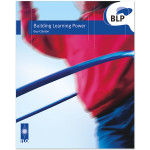
3 copies of Building Learning Power
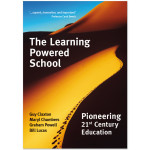
2 copies of Learning Powered School
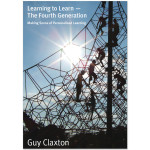
3 copies of Learning to Learn – The Fourth Generation
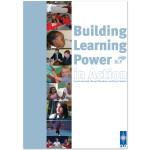
5 copies of Building Learning Power in Action

5 copies of Learning Power Heroes
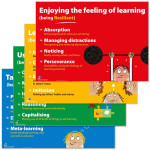
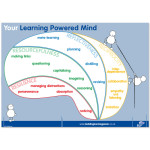
4 sets of 5 BLP Posters for classrooms
Options for the Building Better Learners programme
For Schools new to Learning Power Building Better Learners: Training day start is an option, it does require an INSET day at the start.
For schools new to Learning Power, Building Better Learners: Consultancy review start is also available with in-school training which does not require an INSET day
If your school has already started its own journey with Learning Power, Building Better Learners: Reviving practice start will be right for you.
If you are overseas or don’t have the budget for in-school face to face training, why not try our remote programme, Building Better Learners: On-line start


 A day of face-to-face consultancy in the school
A day of face-to-face consultancy in the school
